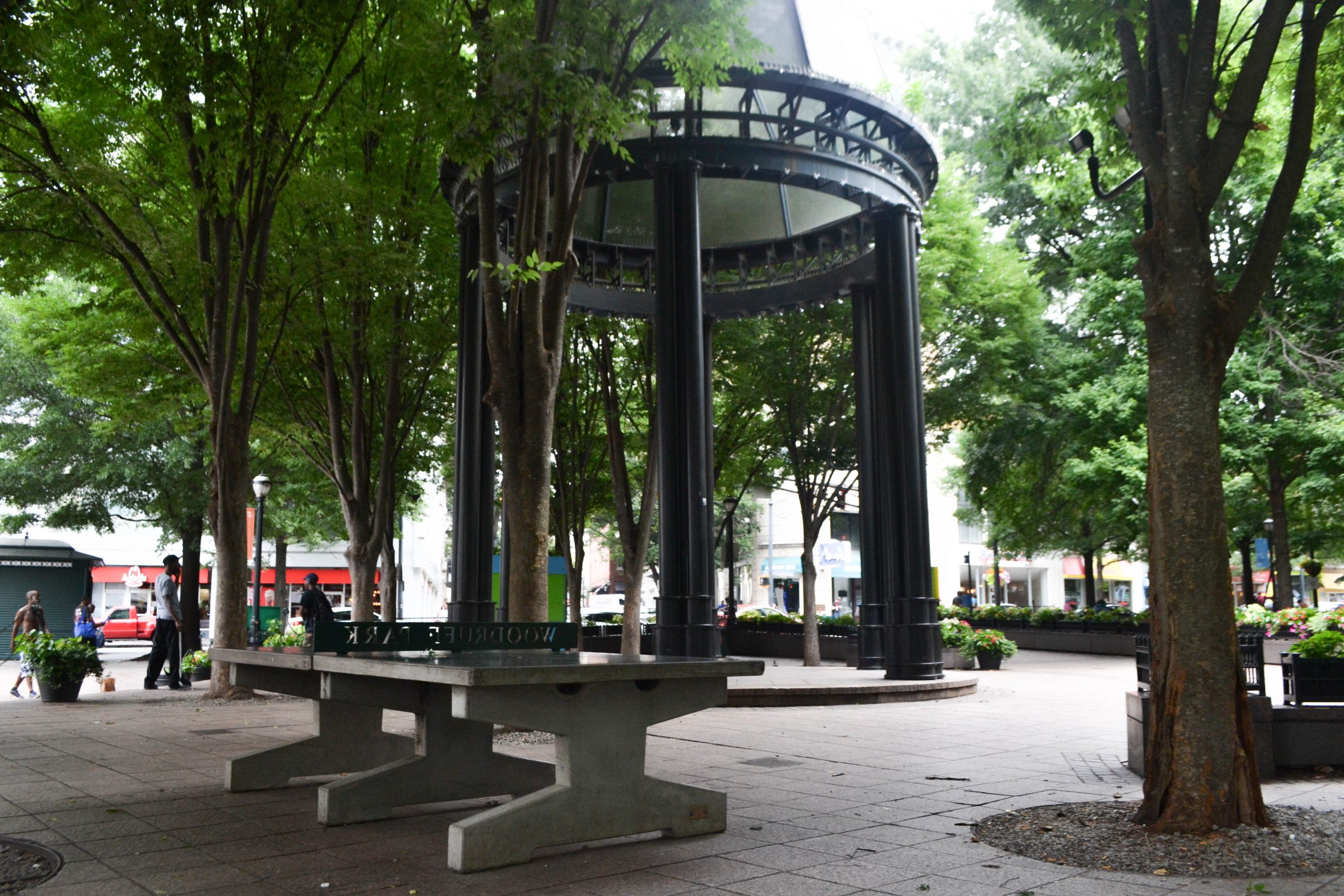
In a recent annual count, homelessness in Atlanta is found to be steadily decreasing.
Conducted by the City of Atlanta Continuum of Care in January, the census found a decrease of about 500 people (14 percent) since 2017. Now six months after beginning to follow Georgia State’s homeless outreach team, campus police chief Joseph Spillane shared his thoughts on where the progress is coming from.
Homeless Outreach and Proactive Engagement (HOPE), a division of the Georgia State University Police Department, works to find the best options for homeless citizens around campus. In the winter, HOPE is known for handing out blankets and taking people to warming shelters in an attempt to prevent hypothermia. However, Spillane says HOPE doesn’t stop working when temperatures rise. “HOPE is year-round,” he said.
Since beginning the annual count in 2009, Atlanta has seen a consistent decline in those who self-report as homeless, down by 44 percent since 2013. “I have noticed in some of the old places that used to have encampments of 9, 10, or 12 people that maybe there’s only three or four now– places like under the Bell Street bridge or near Auburn Avenue,” Spillane said.
Compared to other major cities across the country, the decrease can be seen as a major success, which Spillane said can be credited to individualized attention to every homeless person.
“We have a lot of people who were homeless in Atlanta who have houses and are working now. We’re trying to get these success stories by working with people on an individualized level. We talk to the people in the parks and under the bridges, and we find out what their story is, how they got there, and what resources we think will help them,” Spillane said.
To Spillane, each person deserves personalized attention. “Is it mental health services?” he asked. “Maybe it’s job training. Maybe it’s just somewhere to stay for a few days until they get back on their feet, or it might be that they just want a bus ticket to get back to Baltimore, where they have a safety net or a family to go to. We try to find out what’s best for each person, not just as a group. We don’t say that ‘all homeless people need to be in a shelter.’ That’s not how we’re handling that. We consider their needs on an individual basis.”
Though HOPE plays a major role in reducing homelessness around campus, Spillane says the team would not be able to function without the help of other resources.
“It’s not just our HOPE team that’s making a difference. It’s all of the entities working together. We couldn’t do anything without them. If we find someone that needs a place to stay, I don’t have a shelter. If we find someone who has skills and needs a job, we have outreach to all of these organizations that can help us,” he said.
However, other community leaders, like Jack Hardin, say the city still has more work to do. Hardin, who is a co-chair of the Regional Commission on Homelessness through the United Way, led the creation of the Gateway Center which houses several resources for those in need. The Gateway Center also partners with the HOPE team in helping to find solutions for the homeless.
Though the overall number of homeless people is down, the percentage of those people who are sleeping outside or not in a designated shelter rose since last year.
“I believe that is because the Peachtree-Pine Shelter closed August 28 and no replacement low barrier men’s shelter was available until December 6. Therefore, the community was without a low barrier men’s shelter for three months and the count was done in January,” Hardin said. Low-barrier shelters provide services without requiring ID, drug testing, or other forms of access restriction.
Hardin also said that the number of homeless veterans rose slightly since last year but acknowledged that the numbers may not be accurate, given some might self-report as veterans to try improving their chances of receiving services.
To keep Atlanta’s progress going, Hardin says homeless outreach programs are receiving public and private funding, as well as substantial support from city administration.
Spillane and Hardin both hope for program expansions to further reduce the numbers.
“Our plan is to expand the HOPE team by a couple more officers this year. We want to make sure that we continue to build our relationship with the city resources,” Spillane said.
Hardin said his plan for the future includes four major steps. “End veterans homelessness by 2017, end chronic homelessness by 2019, end youth homelessness by 2020 and end family homelessness by 2020. By ‘end’ we mean make homelessness rare, brief, and non-recurring. We know that we cannot eliminate hardship and adversity, but we can respond to it quickly and effectively and durably.”
For those who want to help keep homelessness down, Spillane encourages everyone to visit a credible shelter or service-provider and volunteer or donate.
